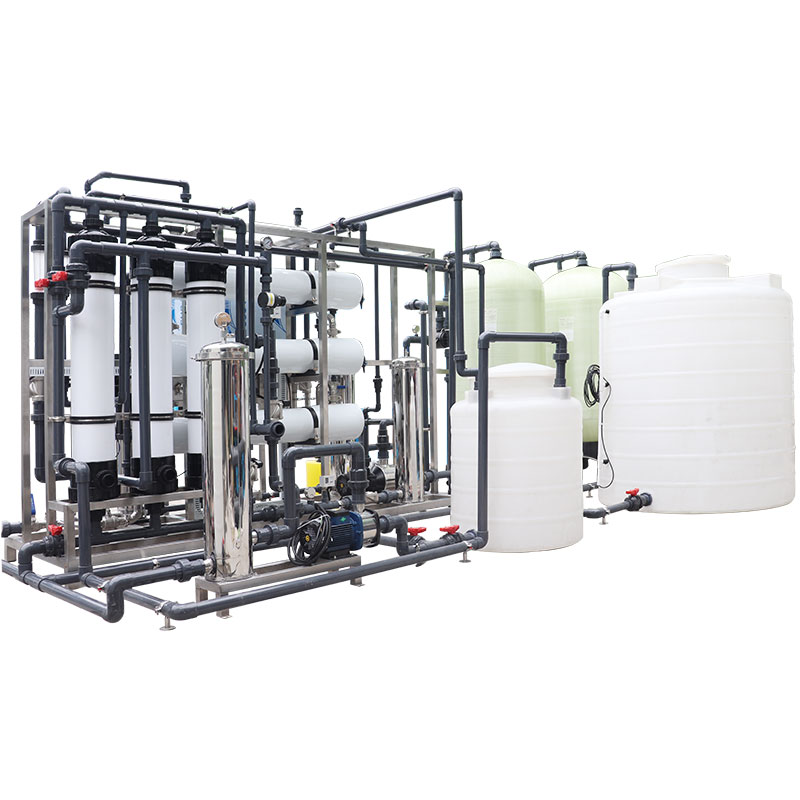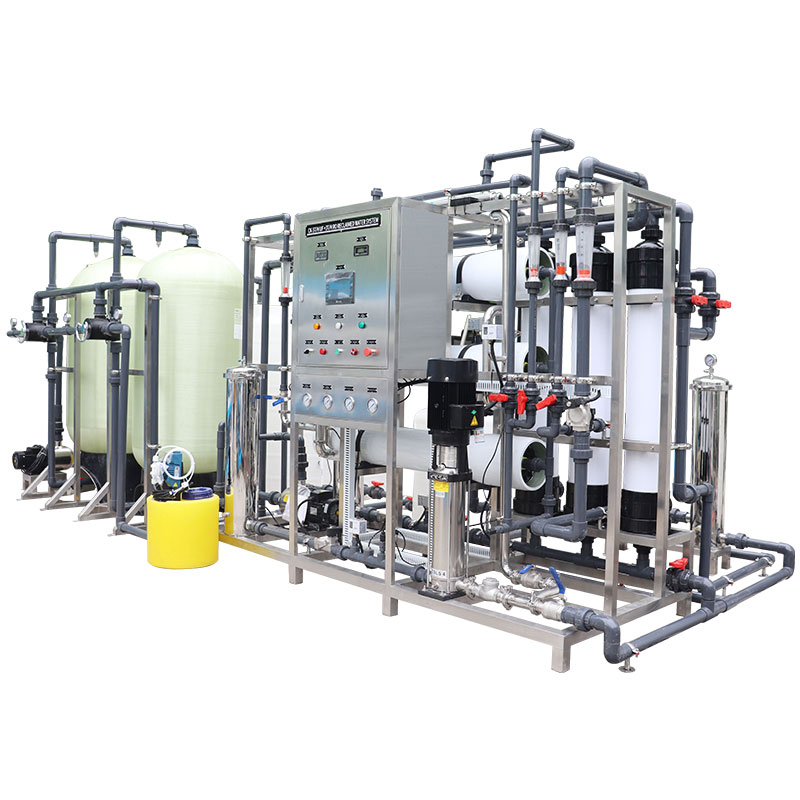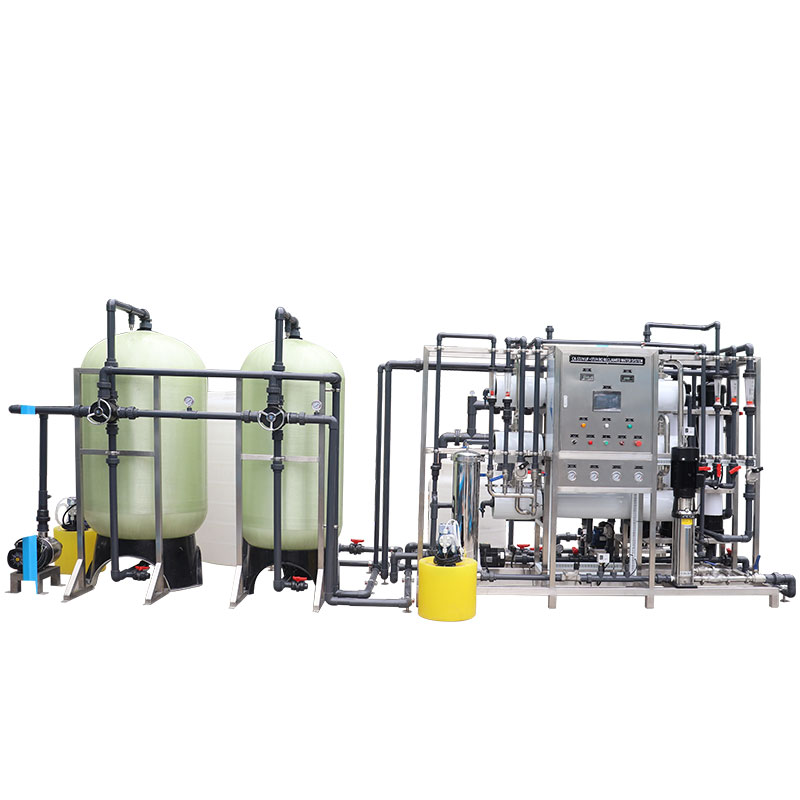What is an automatic backwash filter? How does it work?
The continuous development of water treatment technology has provided a variety of options for various industrial, agricultural and domestic water use scenarios. Among them, the automatic backwash filter stands out among many filtering devices because of its high efficiency and convenience.
This article will introduce in detail what the automatic backwash filter is, and explore its working principle and application areas in depth.

What is an automatic backwash filter?
The automatic backwash filter is a water filtration device that can automatically clean impurities inside the filter. Unlike traditional manual filters, the automatic backwash filter uses a built-in automatic control system to continuously remove dirt on the filter screen, ensuring that the equipment maintains a good filtering effect during long-term operation. This filter is widely used in industries such as industry, agriculture, building water supply and municipal water treatment to remove impurities such as suspended matter, silt, and tiny particles in water.
The key advantage of the automatic backwash filter is that it can complete the cleaning process without stopping the machine. Traditional filtering equipment often needs to be manually disassembled, cleaned or replaced after the filter element or filter screen is blocked, which is not only time-consuming and labor-intensive, but may also cause equipment operation interruption and affect production efficiency. The automatic backwash filter uses an automated control system to monitor the pressure changes of the filter in real time, start the backwash process in time, and ensure that the equipment is always in the best working condition.
What are the components of the automatic backwash filter?
To understand the working principle of the automatic backwash filter, you first need to understand its internal structure. A typical automatic backwash filter consists of the following main components:
1. Filter (filter element):
The filter is the core component of the automatic backwash filter, which is used to intercept particulate impurities in the water. The material and structure of the filter directly determine the filtration accuracy and service life of the filter. Common filter materials include stainless steel, nylon, copper, etc. The filter aperture can be adjusted according to actual needs, usually between 10 and 200 microns.
2. Shell:
The shell is used to protect the filter and other internal components. It is usually made of stainless steel, carbon steel or plastic and has good corrosion resistance and pressure resistance. The design of the shell must ensure the sealing of the equipment and be easy to clean and maintain.
3. Backwash device:
The backwash device is a key component of the automatic backwash filter, which is responsible for starting the cleaning process when the filter is blocked. The backwash device includes a backwash arm, a backwash valve, and a cleaning motor. The backwash arm is usually located inside the filter. When the device starts backwashing, the backwash arm rotates and washes the dirt on the filter through reverse water flow.
4. Control system:
The automatic control system is the core of realizing the automatic backwashing function. The control system consists of a pressure difference sensor, a time controller, and a solenoid valve. It can monitor the working status of the filter in real time and automatically start the backwashing process according to the preset program or pressure change.
5. Drain port:
The drain port is used to discharge impurities washed off the filter during the cleaning process. The drain port is usually connected to the drain pipe so that the dirt can be discharged in a centralized manner.

What is the working principle of the automatic backwash filter?
The working principle of the automatic backwash filter is mainly divided into two stages: normal filtration and backwash cleaning. The following is a detailed description of the workflow:
1. Normal filtration stage:
In the normal filtration stage, untreated water enters from the inlet of the filter, and the water flows through the filter. The filter intercepts suspended matter, silt and granular impurities in the water, and clean water flows out from the outlet after passing through the filter. As the filtration time increases, impurities gradually accumulate on the filter surface, causing the pressure inside the filter to gradually increase. At this time, the differential pressure sensor will monitor the pressure difference between the inlet and outlet.
2. Differential pressure sensing:
When the impurities on the filter surface accumulate to a certain extent, causing the pressure difference inside the filter to exceed the preset value, the differential pressure sensor will transmit a signal to the control system. The control system then starts the backwashing program and switches to the backwashing stage.
3. Backwashing stage:
During the backwashing stage, the system reverses part of the filtered water into the filter through the backwashing valve. At this time, the backwashing arm begins to rotate, using the reverse water flow to flush the impurities accumulated on the filter surface. The flushed dirt is discharged through the sewage outlet. During the backwashing process, the filter does not need to stop working, and the filter part that does not participate in the backwashing continues to filter to ensure the continuous operation of the equipment.
4. Resuming normal filtration:
The backwashing process usually lasts for a few minutes, and the specific time is determined by the filter area, filtration accuracy and water quality. After the backwashing is completed, the system automatically returns to the normal filtration stage and continues to process the water flow. The entire backwashing process is fully automated, and users do not need manual intervention.

What are the advantages of automatic backwashing filters?
Automatic backwashing filters have the following advantages over traditional filters:
1. High efficiency and energy saving:
Traditional filters need to be manually disassembled and cleaned, which consumes time and manpower. The automatic backwashing filter can be cleaned automatically without manual intervention, saving labor costs. In addition, the backwashing process does not require downtime, reducing the risk of equipment interruption and further improving production efficiency.
2. Extend equipment life:
Regular cleaning of the filter can effectively avoid excessive accumulation of impurities, resulting in damage or blockage of the filter, and extend the service life of the equipment. The automatic backwashing filter ensures the timeliness and thoroughness of cleaning through the automated control system, which helps to extend the service life of the filter.
3. Continuous working ability:
The automatic backwashing filter does not need to be shut down during the cleaning process, and can achieve continuous filtration. This feature is particularly suitable for industrial processes with high requirements for production continuity, such as petrochemical, pharmaceutical, food and beverage industries.
4. Widely applicable:
Automatic backwash filters can be applied to various water treatment scenarios. Whether it is treating river water, lake water, groundwater, or circulating cooling water and sewage, they can effectively remove impurities and ensure water quality safety.
What are the application scenarios of automatic backwash filters?
In industrial production, the circulating cooling water system is an important energy consumption link. In order to ensure the quality of cooling water and avoid scaling and corrosion of pipes, automatic backwash filters are widely used in circulating water treatment to remove suspended matter and impurities in water.
In municipal water supply systems, automatic backwash filters can be used in primary water treatment to remove silt, rust and other particulate matter from water sources to ensure the cleanliness and safety of residents' drinking water.
Automatic backwash filters also play an important role in agricultural irrigation systems. By filtering impurities in irrigation water, drip irrigation and sprinkler irrigation equipment can be prevented from clogging, irrigation efficiency can be improved, and the normal growth of crops can be ensured.
In high-rise building water supply systems, automatic backwash filters can be used to remove impurities in pipes, protect water pumps and pipe equipment, reduce maintenance costs, and ensure the long-term stable operation of water supply systems.

How to choose a suitable automatic backwash filter?
When choosing an automatic backwash filter, you need to select the appropriate filtration accuracy according to the water quality. Generally, the higher the accuracy, the better the filtration effect, but the corresponding backwash frequency will also increase. Secondly, the amount of water processed by the filter should match the actual needs to ensure that the equipment can meet the flow requirements of water treatment.
In addition, choose the appropriate filter material according to the characteristics of the water quality. Materials with good corrosion resistance can extend the service life of the filter. Choose equipment with compact structure and easy installation to facilitate subsequent maintenance and management.




